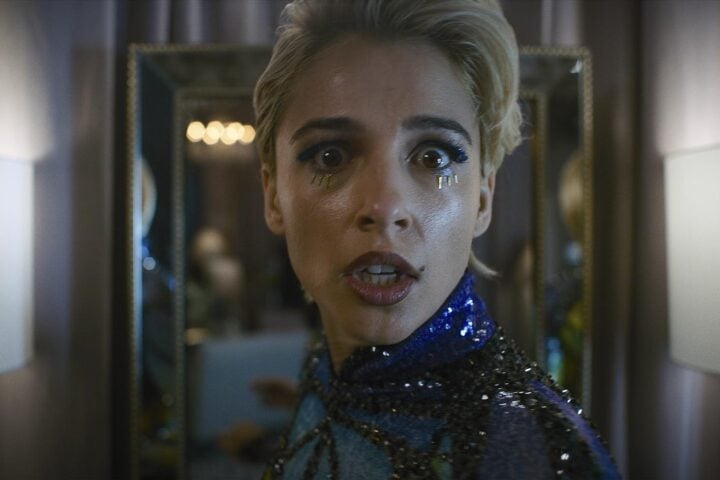Anirban Dutta and Anupama Srinivasan’s Nocturnes documents an elevation study of Himalayan hawk moths by Indian ecologist Mansi Mungee and her Bugun assistant, Bicki, in a remote mountain region on the India-Bhutan border. Mungee’s knowledge of and respect for moths is so profound that she corrects her colleagues on terminology. Yet her openness and passion for the natural sciences is such that she’s eager to explain her work in layman’s terms, unhesitant in reaching across boundaries of ethnicity, nationality, religion, and class to converse empathetically with locals whose labor makes her own possible.
Without making any explicit reference to religion, the filmmakers take great lengths to frame Mungee as a secular priestess of sorts, and the scientific truth-seeking process into climate change that she partakes in as complementary to the spiritual. Her lengthy forest excursions are shown to entail months of isolation and hours of concentration as she considers the tapestry-like moth screens that she sets up to attract moths for study. She reads and types in her time alone, her loose clothing revealing extensive tattoos and piercings of apparently spiritual significance. To call her work an act of meditation brings to mind the most literal sense of the word, a monastic ritual of intense concentration that allows one to access wider perspectives.
Srinivasan and Dutta score many scenes to ambient noise or tonal bells and ancient instruments. The university laboratory, they suggest, is its own kind of temple, and science like religion a process of ritual repetition in search of revelation. Mungee explains how the activity of the moths clues her in to the activity of other animals in the forest ecosystem, climatic changes implicating human activity, and eventually a web of life uniting the fate of all organisms on the planet. “We are looking at this place with our eyes,” she advises. “We need to figure out how to look at it through a moth’s eyes, which I suspect will take a few decades if [it happens] at all.”
Like Mungee, Srinavasan and Dutta are eager to decenter the human subject. Nocturnes begins with—and is effectively represented by—a close-up of moths congregating under a soft blue light. The static, unscored image celebrates the complexity of the insects by highlighting the details of their hair, wings, carapace, and colors. In the widescreen daytime vistas, human figures are dwarflike at the edges of the frame, surrounded by trees and plants, the air humming with insect life. Midway through Nocturnes, members of Mungee’s survey team converse idly about the presence of elephants in the region, almost as if they were discussing an urban legend. When elephants appear on screen toward the end of the film, it feels like a revelation.
Just as Mungee’s work is meditative, so is Srinivasan and Dutta’s approach, as their long takes force us to live within rather than merely observe the moments that they capture. When people aren’t on screen, the camera snaps back and forth from micro to macro portraiture, complementing Mungee’s observations about ecosystem structures to produce a holistic understanding of the natural world. Nocturnes stands out as one of the most reverent treatments of scientific process in recent memory: uplifting in its understated optimism that understanding of the natural world driven by technology might accompany understanding of the divine, as well as humbling in its warning against anthropocentric arrogance.
Since 2001, we've brought you uncompromising, candid takes on the world of film, music, television, video games, theater, and more. Independently owned and operated publications like Slant have been hit hard in recent years, but we’re committed to keeping our content free and accessible—meaning no paywalls or fees.
If you like what we do, please consider subscribing to our Patreon or making a donation.



